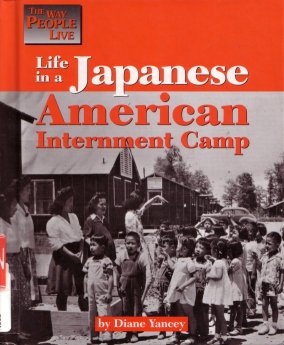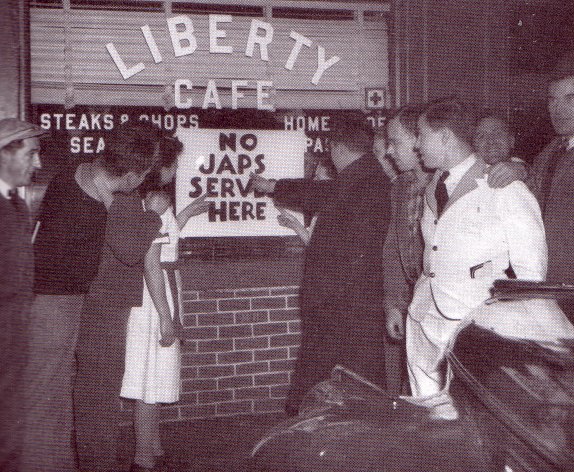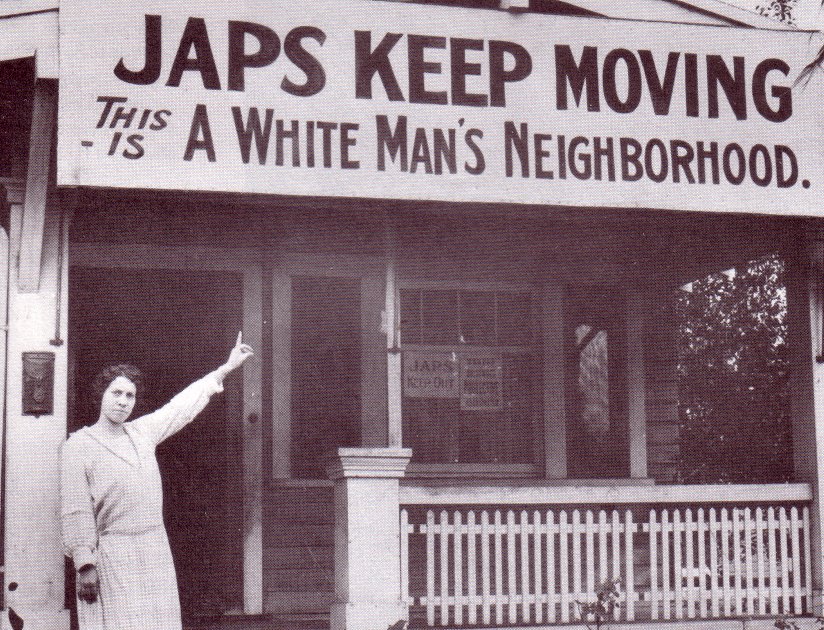
Life in a Japanese American Internment Camp

The book starts out noting that there was already racial prejudice against Asians, particularly on the West Coast of the U.S. Part of this was based on the success Japanese laborers and farmers had, and the fear on the part of white businessmen and workers that the Japanese would take their jobs away, a rationale used to justify discrimination and similar to that used against Jews worldwide.
By law, even before World War II started, Japanese nationals (people born in Japan and living in the U.S.) could not vote, could not own land, and could not become U.S. citizens. This would be like saying today that Hispanics could not vote, own land or become U.S. citizens; basically nonsensical. In addition, laws existed banning Japanese living in America from working in manufacturing, construction and related jobs, so even the type of work they were allowed to do was controlled by the government.
As these Japanese Americans and their children worked harder they succeeded economically which just stirred even more bad feelings against them which led to some workers unions banning Japanese members, certain trades banning Japanese, and some schools segregating Japanese American children from other children. (Nisei is the term used to describe the first generation of Japanese American children born in America. Issei referred to the actual first generation of Japanese that settled in the U.S.)
Formal groups organized against the Japanese Americans including the Japanese Exclusion League.
Executive Order 9066 ordered these Japanese-Americans to be removed from their homes and placed into internment camps, some 110,000 people, 70% of which were already U.S. citizens, born in the U.S.
It is interesting to note that a government study by the State Department before all this happened had concluded that the vast majority of Japanese Americans were no danger at all, and that the fact that they were Asians and had a different physical appearance facially would actually serve to make it much harder for any of them to serve as spies (they would be easily recognized).
The book notes that several thousand people were rounded up by the FBI just hours after the bombing of Pearl Harbor, and that half of those were people of German and Italian descent.
The book goes into just how that did not stop the wave of anti-Japanese sentiments, and how this feeling was supported by various government officials and by the mass media.
Although some citizens of Italian and German descent were incarcerated, they made up only a very small percentage of the total locked up. The reason: "officials" had determined that it was easy to figure out of the Italian and German descent citizens were loyal, but it was much harder to determine if the Japanese descent citizens were loyal.
The areas for evacuation included Military Area 1 (western halves of Washington, Oregon and California and the southern half of Arizona), and Military Area 2 (the other parts of those states.) There was some voluntary relocation, but to the government and the people who were prejudiced it wasn't enough, and forced resettlement began. When people were resettled they often had to sell their possessions for small amounts of money. Those who tried to voluntary resettle further east ran into discrimination again and at times were even turned back at state borders by armed men.
At this time, of course, the United States consisted of only 48 states. Alaska and Hawaii were not states at the time. Alaska did it's own version of internment camps, and even Latin American countries gathered up their Japanese citizens and sent them to U.S. internment camps. Hawaii, interestingly enough, did not have any internment camps.
It was the people who were locked up in the camps that made the greatest effort at improving things, fixing up the gaps in walls of their living quarters, starting schools for their children and doing a variety of other tasks around the camp.
The book notes that the total number of attempted escapes from the camps was about 35. 32 of those were schoolchildren who went onto a restricted hill in order to go sledding. Of the remaining three escape attempts, two were by people who were mentally ill, and the third was by someone under suspicion of murder.
Internment of the Japanese Americans ended on December 18, 1944.
There is discussion of one camp, Tule, where many residents had renounced their American citizenship (it's a complex story) under pressure from militants in the camp. When the militants left, the people realized they had made a mistake, but it the issue wasn't settled until 1968, over twenty years after the war ended.
Later, in 1981, a government commission investigated the entire process of internment of the Japanese Americans and concluded that it was not militarily necessary to do that at all.
It was another nine years, in 1990, that President George Bush sent a letter to former internees apologizing for the injustices of the past. That month, checks for reparations were distributed, although they could not make up what the Japanese Americans lost economically since they generally got only about 10% of the worth of their furniture and other goods when they had to sell them in order to be relocated.
Signs of Discrimination



Three examples of anti-Japanese American discrimination, the first coming from Boston, Massachusetts , and next from somewhere in the western U.S. Below that is shown the home of a Japanese American family that was vandalized with anti-Japanese slogans.
Main Index
Japan main page
Japanese-American Internment Camps index page
Japan and World War II index page
|